When most people think of the winter season they think of family gatherings, holiday party’s and shopping. I on the other hand think of roof leaks, tripped breakers and sand bags. This is because the winter season is when I get calls from customers reaching out to get advice and help to deal with the problems that rainy weather and cold temperatures bring. So to help people avoid preventable problem’s I will tell you some of the issues I’ve seen over the years and ways to fix or prevent them and hopefully help you enjoy the winter season without any unhappy surprises.
Out door plugs.
I’ve seen an increases in use of out door plugs over the years. Which is not unusual given that more people are utilizing there out door space as an extension of there homes living space with the use of tv’s, audio systems, out door kitchens, etc.…. the problems I mostly see that are to do with out door plugs are one the old style of out door plugs are inadequate for todays usage and the second reason is that most of these new out door plug instillations are done with out permits and from people who are not licensed electrician’s and there for are installed improperly. In this section I will not get into over loading electrical panels, ungrounded circuit’s, or other wiring issues I am just focusing on weather proofing your existing plugs and common issues I find at the plug end of equation . Here are some of the issues I’ve encountered.
Old out door plug housing – Most older homes have outdated exterior plug housings like this.
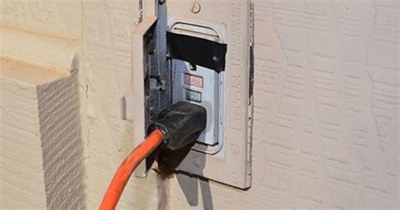
These older plugs have one big flaw when in use they are exposed to the elements in this picture you can see the home owner has taken steps to try and keep water out.
New exterior plug housing – – New exterior plug housings are far superior in there design then the older ones there are a range of options clear covers, obscured covers, plastic housing, meatal housing, low profile design’s etc…. generally these are easy to install and can be done fairly quickly.
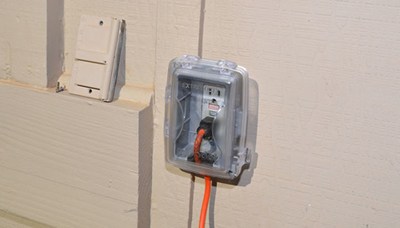
Here is a after photo of the same plug as you can see not only does it look better but it will not let any water or moister in its a win, win.
So this year take the time to update your exterior plug housings to insure your plugs are safe from the weather and that your Christmas lights will shine uninterrupted.
Not G.F.C.I
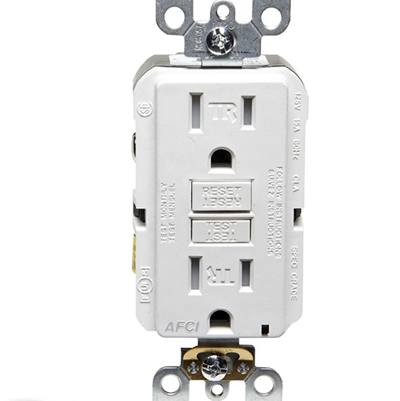
A G.F.C.I outlet, or a ground fault circuit interrupter, is a kind of gadget that will protect you from being shocked or electrocuted. These special kinds of outlets are installed in parts of the house where shocks are most likely to happen, such as outdoors, near swimming pools, or in kitchens and bathrooms. The G.F.C.I outlet has a built in sensor that detects any current change. Any significant change will prompt the system to shut down to protect you from the impending shock. In some cases out door plugs for what ever reason may not be G.F.C.I outlets this is not good for the reasons motioned above. updating plugs to G.F.C.I can be relatively simply if you have a little bit of electrical knowledge and you are dealing with a plug that has new wiring meaning its not the old style nob and tube like this.

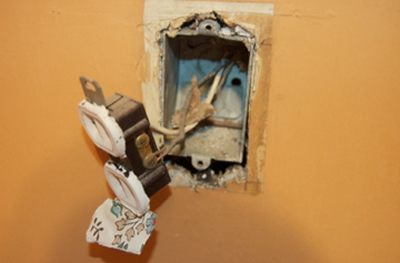
Knob and Tube was installed in homes from about 1880-1930s. Knob and Tube wiring is not grounded. Originally safe Knob and Tube installations are often compromised with unsafe alterations.
Or you are dealing with old wiring that does not have a ground wire (Electrical grounding is “an electrical conductor placed in the ground or earth to protect consumers from unfortunate electrical shocks and to provide return path for electrical current”. Electrical grounding also discharges any static charge (or electrical noise) in the live conductors and protect the equipment) the way you can tell if your wiring is ungrounded is that you most likely have a plug with only two slots and if you remove the plug you will only see two wire coming out of the wall typically a black ( hot wire ) and a white ( neutral ) wire like this.
This is an older version of a receptacle outlet . The slots are different sizes to accept polarized plugs, but it lacks a grounding slot. This outlet does not make use of a ground wire and there is no protection against electrocution as provide by the grounded receptacle.
You can how ever connect a G.F.C.I plug to both of these types of wiring but the G.F.C.I outlet must be marked with a provided label that the outlet is not grounded. The GFCI will still protect the user against ground fault just the same and this method is legal and compliant with the electrical code. But I recommend at some point getting all your wiring replaced as ungrounded outlets increase the chance of:
- Electrical fire. Without the ground present, errors that occur with your outlet may cause arcing, sparks and electrical charge that can spawn fire along walls, or on nearby furniture and fixtures.
- Health hazard. Ungrounded outlets present a very real risk of shock to persons operating the electronics and appliances plugged into the outlet.
- Property loss. Ungrounded outlets can short out equipment, rendering your favorite appliances and tools worthless.
- Messy wiring. In many older homes, it’s not uncommon to find a mixture of grounded and ungrounded outlets. This indicates piecemeal electrical work has been done in the past, and can be a clear sign of serious electrical problems, or can cause many in the future.
If you don’t have either of these type of wiring but and yours looks something like this.
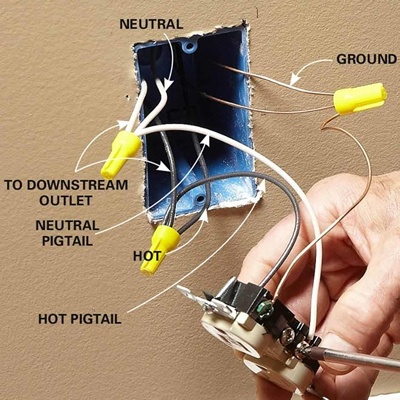
You have updated grounded wiring. And you should easily be able to update your currant plug to a G.F.C.I. When you unscrew a replacement 3-prong, 110-volt plug and separate the casing, you’ll see three wire terminals inside. One is brass, one is chrome and one is green. They’re the same colors as the terminals on a 3-prong receptacle. The brass terminal is for the black hot wire, the chrome terminal is for the white neutral wire and the green terminal is for the ground wire. Hopefully this was informative and helpful. my goal is impower everyone with good information but I want you to Remember the do not do anything that you if you feel unsafe especially when it comes to electrical issues when in doubt call a professional. Call us at Mazzamuto Construction if you would like us to take a look at your issue. If you need extra help getting thru this prosses on your own here is a link to web page that will walk you thru the prosses ( click here )


